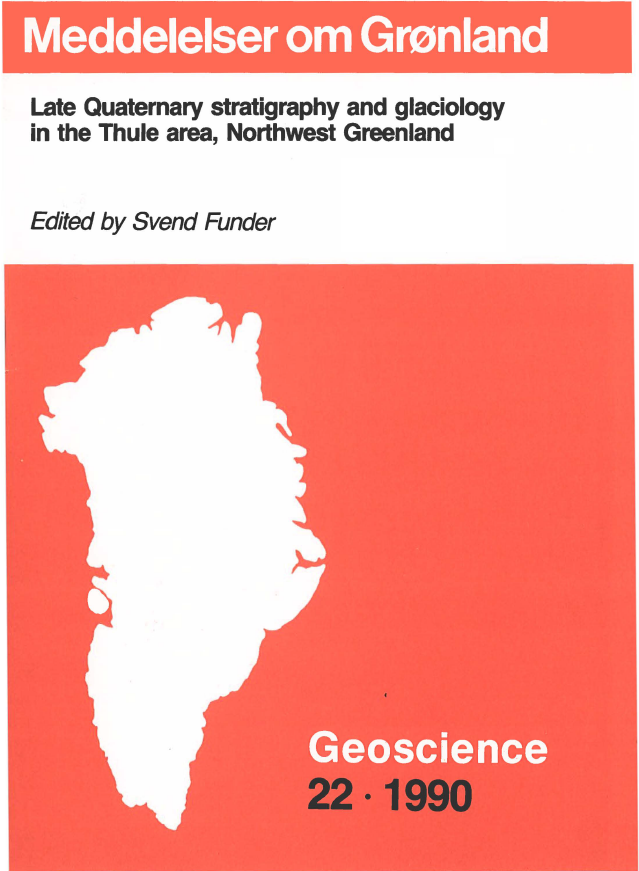Late Quaternary stratigraphy and glaciology in the Thule area, Northwest Greenland: Introduction
DOI:
https://doi.org/10.7146/moggeosci.v22i.140140Abstract
This report contains the geological and glaciological results of the NORDQUA 86 expedition to Thule, Northwest Greenland.
Coastal sections along Wolstenholme Fjord provide a detailed record of glacial and marine events during isotope stage 5 (74-134 ka), on the northern perimeter of Baffin Bay.
The record has been dated by a combination of thermoluminescence and C-14 dating. Amino acid analyses of marine mollusc shells afford local and regional correlations, while periods with penetration of warm subarctic water have been identified by their foraminifer and mollusc faunas. There were two marine episodes with influx of subarctic water. Between the two marine episodes (at 114 ± 10 ka) maximum, although restricted, Weichselian ice coverage was attained. After this, and until the Late Weichselian, ice coverage was similar to or smaller than at present. In Late Weichselian times there was a readvance of glaciers, also associated with influx of subarctic water.
The record provides for the first time a link between events in arctic Canada and Greenland, and shows that in the northern Baffin Bay region there is a causal relationship between hydrography and glaciation.
Samples of glacier ice from two cross sections of the ice margin all show a Holocene stable isotope signal. Although there are several possible explanations for this, this finding is in agreement with the small extent of ice cover during the Weichselian. It also seems likely that the local "Tuto ice dome" did not exist during the Holocene climatic optimum.
Downloads
Published
How to Cite
Issue
Section
License
Coypyright by the authors and the Commision for Scientific Research in Greenland / Danish Polar Center. No parts of the publications may be reproduced in any form without the written permission by the copyright owners.


